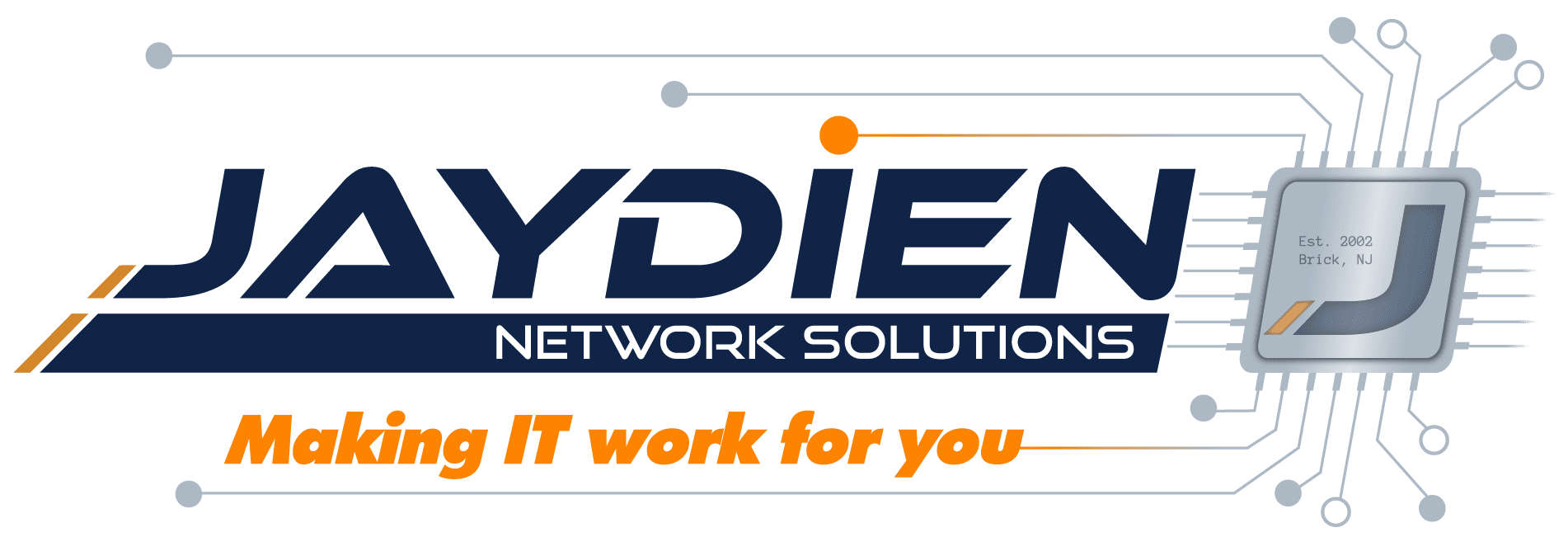
The concept of working remotely has been around for a long time.
43 years ago, in 1979, IBM allowed 5 of their employees to work from home as an experiment — the first company of its kind to do so. By 1983, the same year the internet was invented, roughly 2,000 IBM employees were already telecommuting.
By 1987, an estimated 1.5 million Americans were working remotely. Wi-Fi would not be invented for another 4 years.
But remote work didn’t fully take off until 2020, when so many of us were sent home unexpectedly as millions of offices across the country closed down in response to the Covid-19 pandemic. Many workers have yet to return to the office.
We can’t say for sure whether remote work is a trend or if it’s here to stay, but a revolution has definitely begun. As of January, 2022, a Gallup poll reported that as many as 56% of US adults who either work “full” or “part-time” were reported to be working from home for at least a percentage of their work week. The same poll reported that 33% of US adults were now working from home for the entirety of their work week.
Let’s explore the essential remote working tools you need to achieve success in your business from home.
What is Remote Work?
Remote work, or telecommuting, is a flexible work arrangement that allows employees to work from a remote location outside of their employer’s physical or corporate office.
When set-up effectively, working remotely gives employees the flexibility to perform all of the functions of their work from anywhere, while remaining productive and connected to their team.
For most, this means working from home or at their favorite coffee shop. Others have embraced a “digital nomad” lifestyle —working and traveling across multiple locations. The rise of cloud technology, increased internet speeds and reliability, and improved communication and collaborative remote working tools have allowed more and more teams to join the remote work movement.
What Are the Essential Remote Working Tools?
Reliable Internet Connection
One of the biggest issues you’ll encounter while working from home is an unreliable internet connection. And even if you have access to a high-speed connection, the area where you set up could have a poor Wi-Fi signal. Jaydien recommends a hard-wired internet connection whenever possible to guarantee up-time and reliability. if Wi-Fi is your only option, but your signal is spotty, then a Wi-Fi extender or a new internet modem could help. Reach out to your ISP (Internet Service Provider) and inquire about getting a new modem, there’s a good chance you’re due for a free upgrade.
For security reasons, a shared or public connection should never be used for work.
Dedicated Workspace
A dedicated workspace is also highly recommended. Not everyone will have access to a home office, but it’s critical to have a private, quiet space assigned for work. If you can, designate a separate area of your home as dedicated work space. This will help you stay productive. When possible, a room with a door is always preferred, as it will help you separate your work-life from your home-life.
Resting your laptop on your lap while on the couch, or working at the kitchen table may seem ideal, but will hinder productivity in the long-term.
Ergonomic Chair
An ergonomic chair with plenty of lumbar support should be one of your first priorities. Especially for those who spend most of their work day sitting down. Couches, dining chairs, and deck chairs are rarely the right height, and rarely keep you in an upright posture.
Adequate Desk Area
Making sure your desk or surface area is at the correct height is also essential. The recommended industry standard is somewhere around 29”. That’ll differ depending on your height, your chair, and the type of work you’re doing. For instance, if like me, you’re mostly typing on a keyboard, then that height should be an inch or two lower than for those mostly writing with pen and paper. A good way to gauge this is by sitting up straight and making sure your forearms are parallel to the ground and your wrists are not bent when typing or moving your mouse.
Lighting
It’s very easy to overlook the importance of good lighting. Too much light and too little light come with their own unique issues. Diffuse natural light with shades or curtains when necessary to avoid screen glares and unwanted reflections. Overhead lighting is usually best for artificial illumination, but desk lamps can provide plenty of visibility without eye-strains or unwanted glare.
An ergonomic keyboard and mouse, a headset, and a computer camera are also highly recommended.
If you’d like help choosing peripheral remote working tools and equipment, please feel free to reach out to myself or one of our techs at Jaydien Network Solutions.
What Other Tools Will You Need?
Technology plays a big role in the success of any virtual team. Employees need the same level of access to files, contacts, and coworkers that they have when they’re in the office. Let’s break this next section down into 3 separate categories — Communication Tools, Remote Access Tools, and Project Management Tools.
Communication Tools
At Jaydien, our Communication Tool of choice is Microsoft Teams.
Microsoft Teams is a virtual workspace application that allows you and your coworkers to securely edit files, communicate with mentions, likes, and replies, and even customize the platform by adding notes and other communication, management, and productivity apps. You can customize your alerts, make voice calls, start a video conference, join group chats, send private messages, and instantly see your frequently used documents. Teams can even replace your office phone! If you upgrade to an O365 Business Premium plan you’ll get a 10-digit phone number and Microsoft Teams Phone, a cloud-based phone system with all the features of a VoIP phone system.
Other popular communication tools such as Zoom, Skype, and Slack offer similar features, but we prefer Teams, especially given the fact that you and your employees probably have a O365 subscription already. If you’d like more information on O365 plans, configuration, or training, send us an e-mail or give us a call. We’re here to help.
Remote Access Tools
There are a lot of Remote Access Tools to choose from, but we think the safest option is using a VPN license to remote into your office server via a SonicWall firewall. When working from home, I use SonicWall’s Global VPN client to remote into our office server so that I can access company files.
CentreStack is another great option. CentreStack provides secure remote access to file servers while maintaining privacy by keeping all your files on-premises. The solution offers a powerful combination of file server security and cloud mobility through familiar mapped drives that require little to no end-user training.
But maybe your company doesn’t have a shared file server and you just want to remote into your own work computer from your home computer. In that case, we’d suggest LogMeIn.
LogMeIn lets you take control of another computer from anywhere in the world. With it, you can easily access all the important files on your work computer with nothing more than an internet connection.
Other applications like Dropbox and Google Workspace give you similar remote access functionality. If you’d like help choosing the right remote access software for your office, give us a call!
Project Management Tools
Microsoft Project is one of the most sophisticated Project Management Remote Working Tools on the market today. Boasting all the planning, scheduling, reporting, viewing, management, and collaboration functionality that any Project Management platform would ever need. It offers industry-leading features that allow you to identify the best way to schedule projects and optimize workload distribution across your team. It isn’t cheap, with its cloud licenses starting at $10/user, and It does come with a bit of a learning curve, but it’s the PM software of choice for certified Project Management professionals. It might not be for everyone, but it gets our vote due to how complete it is, and its ability to fully integrate with other O365 applications.
Basecamp is one of the best-known project management platforms in the world, helping companies and teams achieve higher levels of productivity, collaboration, and organization by providing a unified, easy to use location for all company-wide communications. There are certain drawbacks, like the inability to add deadlines for each task, but it’s an excellent PM tool for beginners, and can scale to support teams of all sizes.
Recommended Best Practices
Communication, Communication, Communication
Since you aren’t all at the office, you won’t have the opportunity to collaborate in person, check in on each other, or catch up in the break room. Remote teams need to find other ways to regularly and effectively communicate, and the best way to do that is to…
Embrace Mobile Technology
Let me give you a personal example. My office phone and all of its features are fully accessible on my laptop via Sangoma’s software phone, but they’re also fully accessible on my cell phone via Sangoma’s mobile app. Both are free.
I can turn off one or either, but I’ve found it’s easiest to let them both ring when working remotely. If for whatever reason I step away from my desk while my headset/headphones are still connected to my laptop, I may not be able to hear the softphone ring. But it won’t matter because the mobile app will still notify me of the call. The same goes for Teams, Outlook, and frankly, every other collaboration platform you’re likely to use at work. Most, if not all offer free mobile apps that can help you stay productive and accessible from anywhere.
When working from home, I find that more often than not I’ll communicate with my coworkers on mobile apps, even when working on my laptop. A second screen helps with productivity, and not having to load up programs on my laptop frees up some processing power so it can run a little faster.
Minimize distractions
This one is both very obvious, and easier said than done. More of a tip rather than a remote working tool, locking yourself behind a door is the easiest way to avoid distractions, but not all of us have that option. A noise-cancelling headset is crucial, especially if you live in a city, have a barking dog, noisy neighbors, or if peace and quiet are just generally luxuries for you.
Take Regular Breaks
One hour for lunch and two 15-minute breaks are the standard for full-time US employees, but double-check with your organization. For computer-based work, it’s important to stand up and move around every so often to get your blood circulating. At least once an hour is recommended. It also helps to move your eyes off screen regularly, even if just for 10 or 20 seconds.
Don’t short-change your breaks either, especially your lunch hour. There are apps such as TimeOut for Mac and SmartBreak for Windows that let you set a schedule for when and how long you’ll be locked out of your computer for. RescueTime also has a pause feature that lets you time 15-minute and one-hour breaks. Don’t need any more apps in your life? Set an alarm or timer on your phone, or just keep an eye on the clock.
Setting and sticking to a routine, exercising regularly, and connecting with the outside world on your free time are also crucial. You’re more than likely spending your entire day alone, staring at a screen. We’re social beings, after all, so make sure you replace the socializing you’ll no longer be getting from the office. Not having a commute means you’ll have more time to dedicate to yourself and the people in your life, so make the most out of that time you’re getting back!

Ready to Succeed With Remote Working Tools?
If you’re ready to improve your remote work set up or have any questions about optimizing it, look no further than Jaydien Network Solutions. Our knowledgeable team has the info you need to take your remote work game to the next level. Whether you’re looking for wireless solutions or setting up a business phone system, we have the tools you need! Reach out to Jaydien today to get started!









